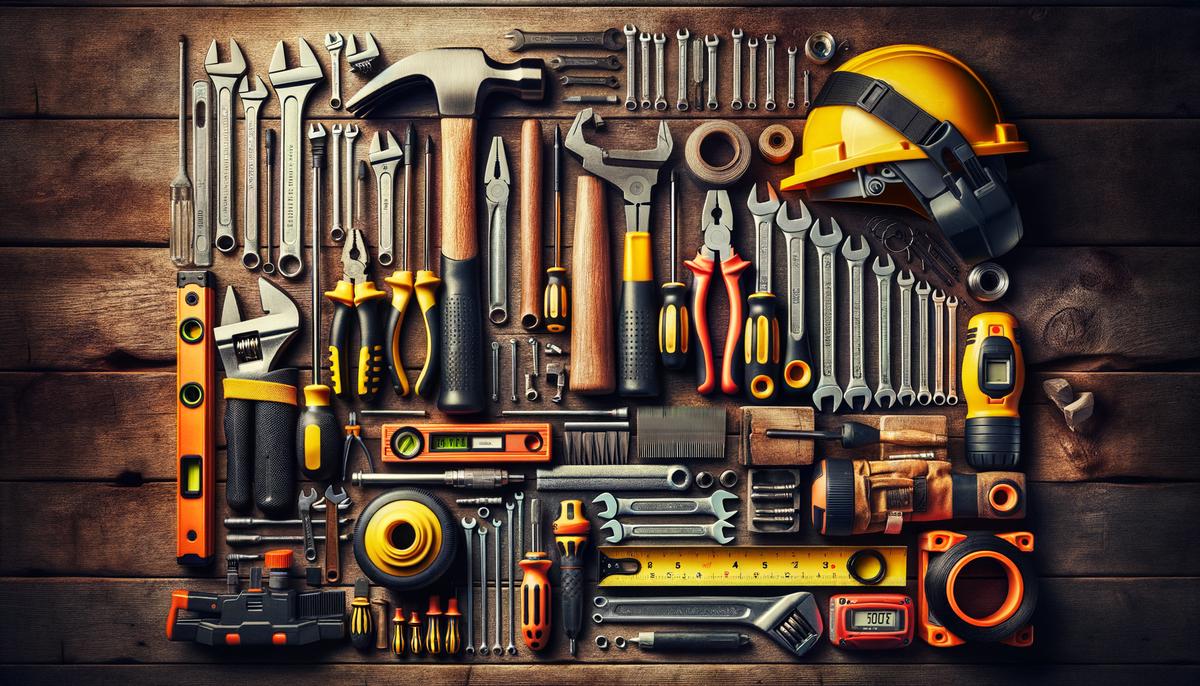Welcome to homeownership! Whether you're stepping into a new build or a charming older home, understanding how to care for it can be both rewarding and fun. From assessing your home's condition to planning for repairs, there's always something new to learn. So grab your toolkit—or maybe just a cup of coffee—and let's explore how to make your home the best it can be.
1. Assess the Age and Condition of Your Home
Your home's age and condition are key factors in budgeting for maintenance. For homes under 10 years old, you can usually set aside about 1% of your home's value annually for upkeep. Older homes, especially those over 30 years, may need closer to 4%.
The age of major systems like heating and plumbing matters too. A 25-year-old roof will likely need attention sooner than one installed recently. Don't skip professional inspections—they can reveal issues in areas you might overlook.
Consider your home's overall condition. Has it been well-maintained or neglected? Regular care of HVAC, plumbing, and structural features can prevent costly repairs down the line.
- Your local climate plays a role too. Harsh weather can accelerate wear and tear, so adjust your budget accordingly.
- Remember to set aside a bit extra for unexpected issues. It's not just smart—it's peace of mind.

2. Conduct Regular Inspections
Regular inspections are your home's annual check-up—skipping these is like avoiding the dentist. They're your first line of defense against small issues becoming big problems.
- Roof: Check for loose shingles, cracks, and areas where water might pool. Think of it as giving your roof a good once-over to catch any trouble spots early.
- Foundation: Look for cracks, uneven floors, and signs of shifting. Early detection of these issues can prevent more serious structural problems.
- Plumbing: Inspect under sinks, behind toilets, and along pipes for leaks. Test water pressure and check for slow drains. A small leak today could lead to a costly repair tomorrow.
- HVAC system: Regularly check filters, fans, and ducts to keep the air fresh and your system running efficiently.
Aim for inspections twice a year—perhaps in spring and fall. It's a smart way to keep your home in top shape and avoid unexpected repairs.
3. Follow a Seasonal Maintenance Schedule
Just like you change your wardrobe with the seasons, your home needs different care throughout the year.
| Season | Maintenance Tasks |
|---|---|
| Fall | Clear gutters, inspect heating system |
| Winter | Insulate pipes, sweep chimney |
| Spring | Check for winter damage, prepare AC |
| Summer | Pressure wash exterior, check sprinklers |
Following a seasonal schedule helps you stay ahead of potential issues and keeps your home in great shape year-round.
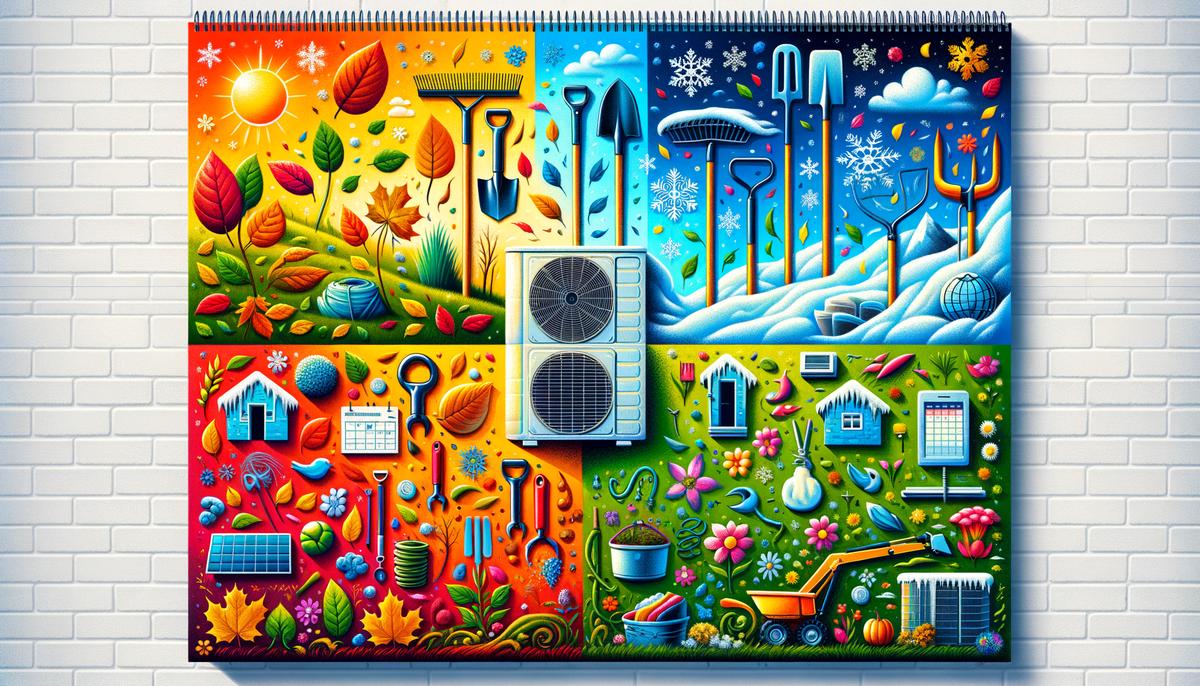
4. Create a Home Maintenance Budget
Creating a home maintenance budget is like setting up a financial safety net for your house. The general rule is to set aside 1%-4% of your home's value annually for maintenance and repairs.1
- Newer homes (under 10 years): Budget closer to 1%
- Older homes (over 30 years): Budget closer to 4%
For example, for a $300,000 home:
- 1% = $3,000 per year
- 4% = $12,000 per year
Consider your location too. Coastal homes or those in areas with extreme weather might need a bit more in the budget due to increased wear and tear.
Remember, this budget isn't just for repairs—it's for routine maintenance too. Things like seasonal weatherproofing and regular check-ups are part of keeping your home in good shape.
A well-planned budget helps you maintain your home without financial stress. It's about being prepared and enjoying your home worry-free.

5. Maintain Routine Maintenance Tasks
Regular maintenance is key to keeping your home in top shape. Let's focus on three important areas:
- HVAC filter changes: Change every three months, or more often if you have pets or live in a dusty area. Clean filters help your system run efficiently and improve air quality.2
- Gutter cleaning: Clean at least twice a year, more if you have lots of trees nearby. This prevents water damage to your home's foundation and walls.
- Lawn care: Regular mowing, watering, and occasional fertilizing keep your yard looking great. Consider a sprinkler system for easier maintenance.
Try combining these tasks for efficiency. Change your HVAC filter, then head outside to clean the gutters and tidy the yard. Keep a checklist to track your maintenance tasks.
"Regular maintenance might seem like a chore, but it's an investment in your home's future. It prevents small issues from becoming big problems and keeps your home comfortable and functional year-round."

6. Plan for Emergency Repairs
Home ownership comes with its share of surprises, including unexpected repairs. That's why it's crucial to have an emergency repair fund. Think of this as your home's rainy day fund, ready to help when disaster strikes.
Aim to set aside at least $10,000 in a dedicated emergency fund. This might sound like a lot, but it's a smart investment in your home's future. Start by automating a small portion of each paycheck into a high-yield savings account. Even if it's just $50 a month, it adds up quicker than you think.
Pro-tip: Calculate potential costs based on your home's unique quirks. Got an aging roof? Bump up your fund. Live in an area prone to severe weather? Add a little extra cushion. Adjusting your fund to your home's needs ensures you're prepared for the unexpected.
Your emergency repair fund provides peace of mind. It's your buffer against the unexpected and the insurance policy for your sanity. So plan, save, and rest easy knowing you're ready for whatever homeownership might throw your way.
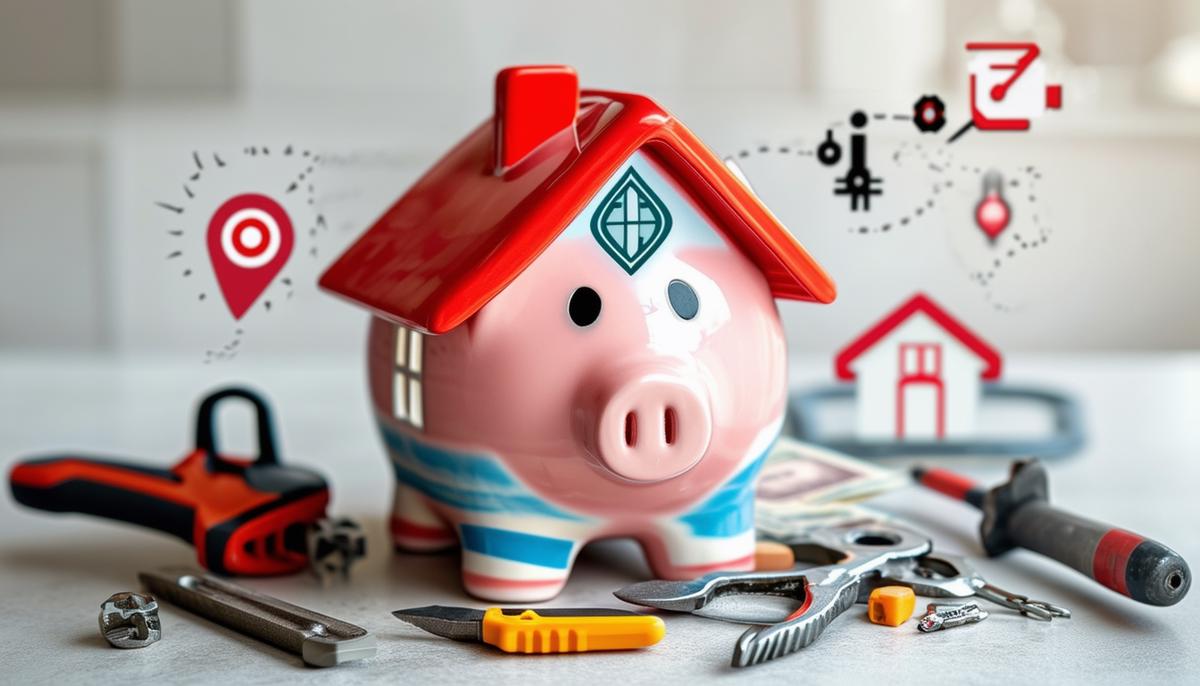
7. Opt for Regular Professional Check-Ups
Just as you wouldn't skip your annual health check-up, your home's systems need regular TLC from experts. Schedule yearly or bi-annual check-ups with professionals in HVAC, electrical, and plumbing. These experts can spot small problems before they become major issues.
- HVAC technicians will check your filters, inspect the ductwork, and ensure your system runs efficiently. A well-maintained HVAC isn't just about comfort—it's about keeping your energy bills in check.
- Licensed plumbers will inspect pipes, check for leaks, and ensure everything's up to code. They can prevent issues like clogged sewer lines that are beyond most DIYers' skills.
- Electricians can prevent a host of issues by catching small electrical glitches early. From wiring scans to ensuring your outlets are safe, they keep your home safely powered.
Consider periodic professional looks at your larger appliances, chimney, and sump pump if you have one. Adjust your check-up schedule to your home's specific needs.
Remember, bringing in the pros isn't admitting defeat—it's a smart way to avoid costly repairs down the line. Think of these check-ups as your home's annual physical, catching issues early and keeping your home in top shape.
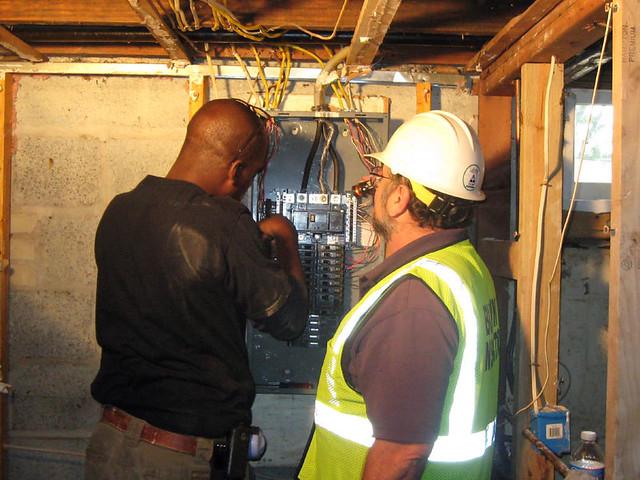
8. Use a High-Yield Savings Account for Maintenance Funds
Maximize your home maintenance savings by parking them in a high-yield savings account. These accounts offer better interest rates than traditional savings accounts, allowing your money to grow while remaining accessible for repairs.
Online banks often offer higher interest rates due to lower overhead costs. Shop around for the best Annual Percentage Yields (APYs) to make your savings work harder for you.
Steps to get started:
- Open a separate high-yield savings account dedicated to home maintenance.
- Set up automatic transfers from your paycheck to this account each month.
- Watch your balance grow with consistent contributions and compound interest.
The beauty of high-yield savings accounts is their flexibility. You can access your funds when needed without early withdrawal penalties, unlike CDs or some investment accounts.
By using a high-yield savings account, you're not just saving money—you're growing it. This approach ensures you're prepared when surprise repair bills come your way, turning potential maintenance woes into manageable situations.
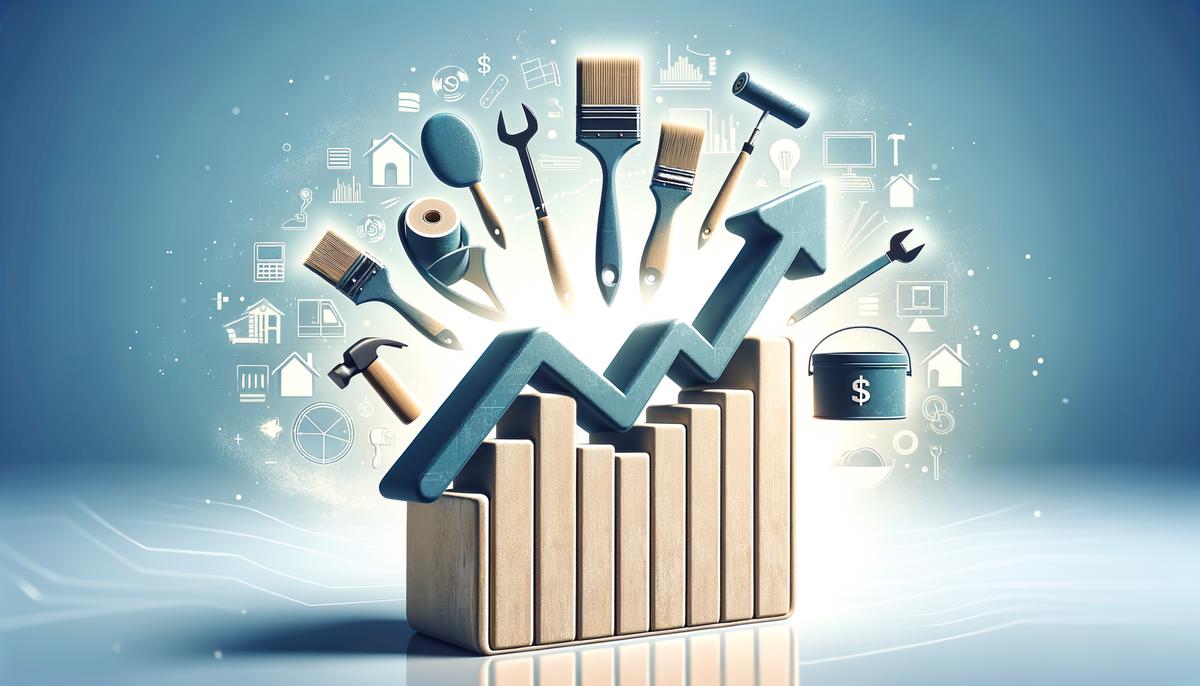
9. Leverage Home Warranties and Insurance
Home warranties and insurance are valuable tools in your homeowner toolkit. They provide financial protection and peace of mind against unexpected repairs and disasters.
Home warranties cover the cost of repairing or replacing essential home systems and appliances. For an annual fee (usually $300 to $600), these warranties can save you from costly repairs on HVAC, electrical, plumbing, and major appliances. When shopping for a warranty, compare plans to find one that fits your needs and budget. Be sure to read the fine print, as coverage can vary.
While home warranties handle day-to-day breakdowns, home insurance protects against major disasters like fire, theft, and storm damage. Review your policy annually to ensure it matches your home's current value and covers your personal belongings. Consider adding coverage for natural disasters specific to your area.
| Home Warranty | Home Insurance |
|---|---|
| Covers everyday system and appliance breakdowns | Protects against major disasters |
| Annual fee: $300-$600 | Premium varies based on coverage and location |
| Covers HVAC, electrical, plumbing, appliances | Covers fire, theft, storm damage, liability |
Combining a home warranty with solid insurance policies gives you comprehensive protection. This dual approach covers you for both everyday mishaps and rare, but financially significant, events.
Investing in warranties and insurance isn't just about money—it's about peace of mind. With these safeguards in place, you can enjoy your home without worrying about potential financial setbacks from unexpected repairs or disasters.
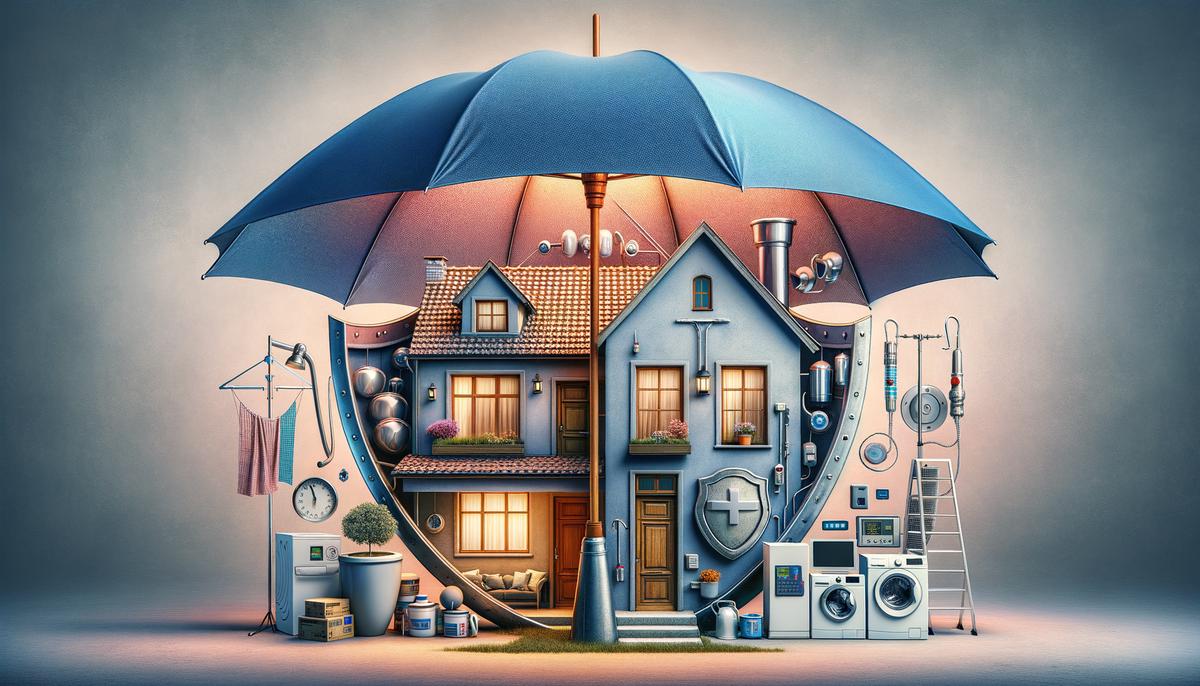
10. Compare DIY and Professional Services
The Great Debate: DIY vs. Professional Services
DIY or not to DIY—that is the question! Knowing when to roll up your sleeves and when to call in the pros can save you time, money, and stress. Let's explore this topic.
Assess Your Skills and Tools: Know Thyself
Do you have the skill set and tools to tackle this project? For simple tasks like painting a room or assembling furniture, you might be well-equipped. But for electrical rewiring or fixing a leaking roof, it's time to call a professional. Safety hazards and potential for greater damage aren't worth the risk.
Time vs. Money: The Balancing Act
Sometimes, it's not just your skills but your time that's in short supply. If you find yourself spending weekends on fixes that a professional could do quickly, you might want to rethink your approach. Conversely, if a task is within your abilities and you're willing to invest the time, DIY can be financially savvy.
Scope and Complexity: When to Play It Smart
Sprucing up a wall with paint is a quintessential DIY task. But if your project involves more intricacy—like redesigning kitchen plumbing—consider professional help. Intricate tasks often come with nuances and building codes that can challenge even enthusiastic DIYers.
Cost of Mistakes: DIY Disasters
Replacing a botched DIY job can sometimes be more expensive than hiring a pro initially. Weigh the cost of potential mistakes before diving into your next home improvement project. If a mistake could lead to a hefty repair bill or safety risks, it's worth calling in an expert.
The Fun Factor: Love What You Do
If DIY is your therapy, by all means, keep at it! But balance passion projects with practical needs. Love tiling your own bathroom? Go for it! Hate the idea of re-caulking your windows? That's what professionals are for.
Tool Investment: DIY Arsenal
Consider the cost of buying or renting specialized equipment against hiring a pro who comes equipped. Invest in tools for frequently recurring tasks, but for one-off, specialized jobs, outsourcing might be more cost-effective.
The Satisfaction of Completion: Pride and Bragging Rights
Part of the allure of DIY is the satisfaction of admiring your handiwork. Professional services might complete the task faster, but the pride of a job well done by your own hands can be rewarding. Weigh that satisfaction against the project's complexity and your available time.
"The goal is maintaining a home that's safe, functional, and fabulous."
In the end, smart home maintenance lies in balance. Know your strengths, recognize your limits, and don't hesitate to call experts when a project is beyond your abilities. Whether you DIY or hire pros, the goal is maintaining a home that's safe, functional, and fabulous.
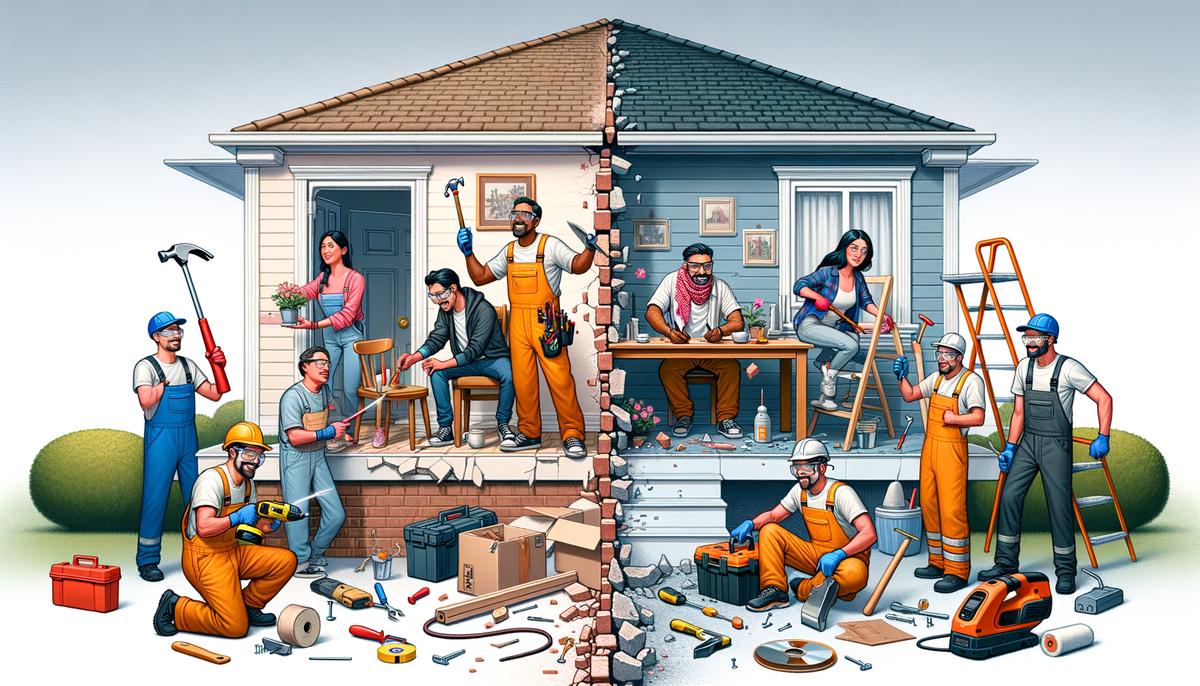
Maintaining your home is about creating a space you love and feel proud of. By budgeting wisely, conducting regular inspections, following seasonal maintenance schedules, and knowing when to call in the pros, you'll ensure your home remains a sanctuary for years to come. Here's to happy homeowners and well-loved homes!

